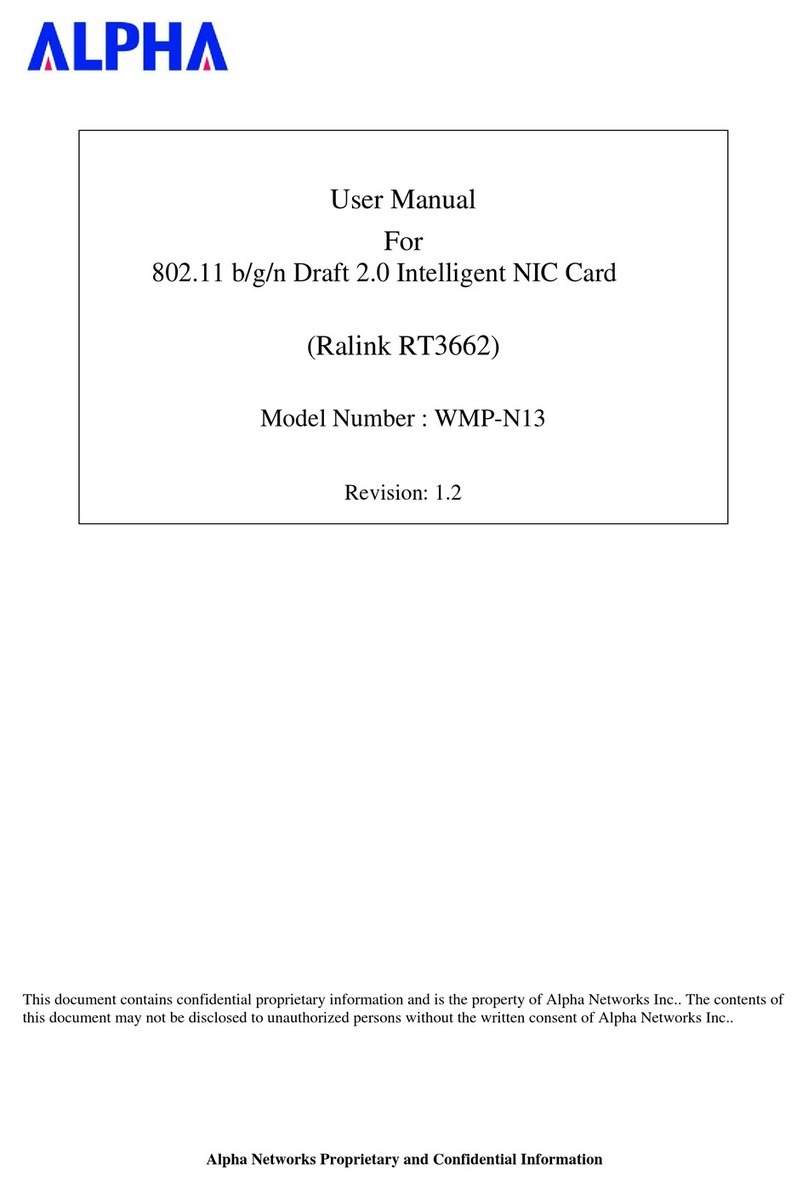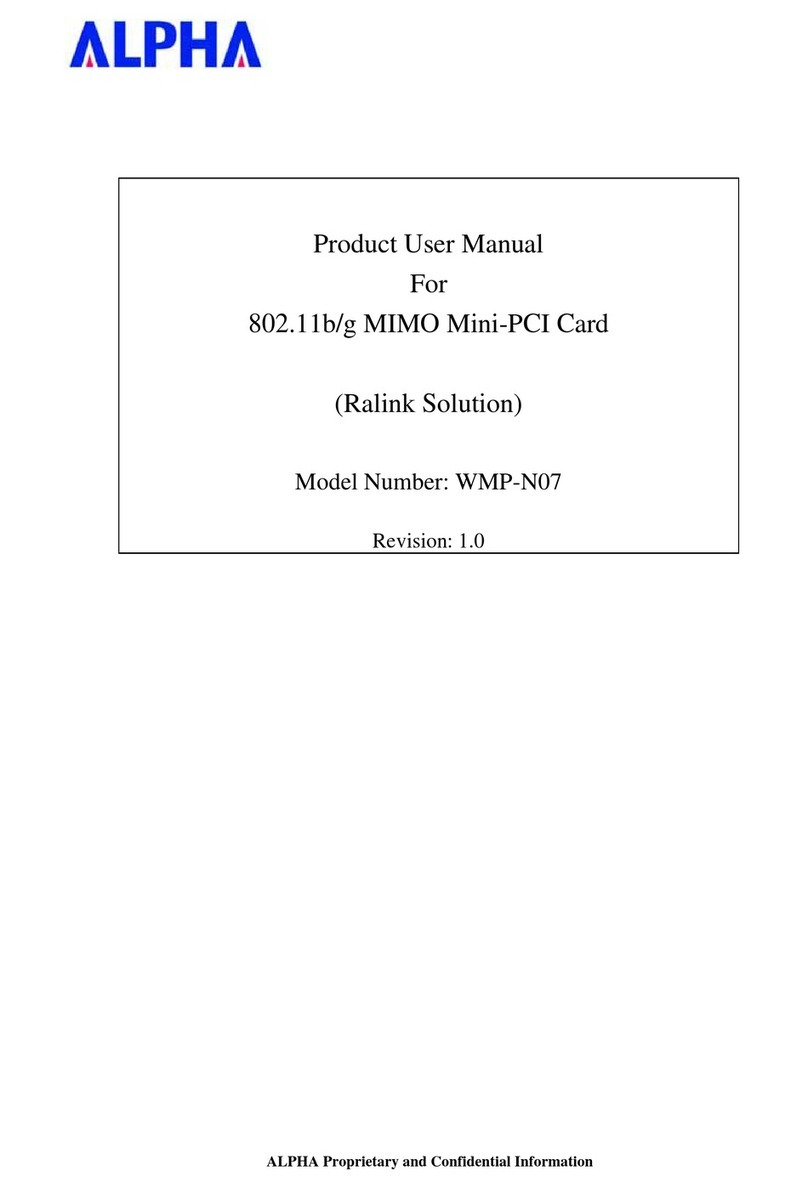
Alpha Networks Proprietary and Confidential Information
1.0 Scope
1.1 Document
This document is to specify the product requirements for 802.11 b/g/n USB Dongle. This Card is based on Ralink chipset
that complied with IEEE 802.11g, IEEE 802.11b, IEEE 802.11n standard from 2.4~2.5GHz, and it can be used to provide
up to 54Mbps for 802.11g, 11Mbps for 802.11b and 150Mbps for 802.11n to connect your wireless LAN.
With seamless roaming, fully interoperability and advanced security with WEP standard, 802.11b/g/n USB Dongle offers
absolute interoperability with different vendors’ 802.11g, 802.11b and 802.11n Access Points through the wireless LAN.
1.2 Product Features
yCompatible with IEEE 802.11n draft 2.0 standard to provide wireless 150Mbps data rate.
yCompatible with IEEE 802.11g standard to provide wireless 54Mbps data rate
yCompatible with IEEE 802.11b standard to provide wireless 11Mbps data rate
yOperation at 2.4 ~ 2.5GHz frequency band to meet worldwide regulations
yDynamic date rate scaling at 6, 9, 12, 18, 24, 36, 48, 54 for IEEE 802.11g.
yDynamic date rate scaling at 1, 2, 5.5, and 11Mbps for IEEE 802.11b
yMaximum reliability, throughput and connectivity with automatic data rate switching
ySupport wireless data encryption with 64/128-bit WEP for security
ySupport infrastructure networks via Access Point and ad-hoc network via peer-to-peer communication
ySupport WEP, 802.1x, WPA and WPA2 enhanced security
yFriendly user configuration and utilities
yDrivers support Windows 2K, XP 32/64-bit, Vista 32/ 64-bit
ySupport external WPS button to connect Access Point easily
yHigh speed USB 2.0 interface
yRoHS compliant
WLAN Card
his document is to specify the product requirements for WLAN Card. This Card is based on Ralink chipset
that complied with IEEE 802.11g, IEEE 802.11b, IEEE 802.11n standard from 2.4~2.5GHz, and it can be used to provide
up to 54Mbps for 802.11g, 11Mbps for 802.11b and 150Mbps for 802.11n to connect your wireless LAN.
With seamless roaming, fully interoperability and advanced security with WEP standard, WLAN Card offers
absolute interoperability with different vendors’ 802.11g, 802.11b and 802.11n Access Points through the wireless LAN.





























